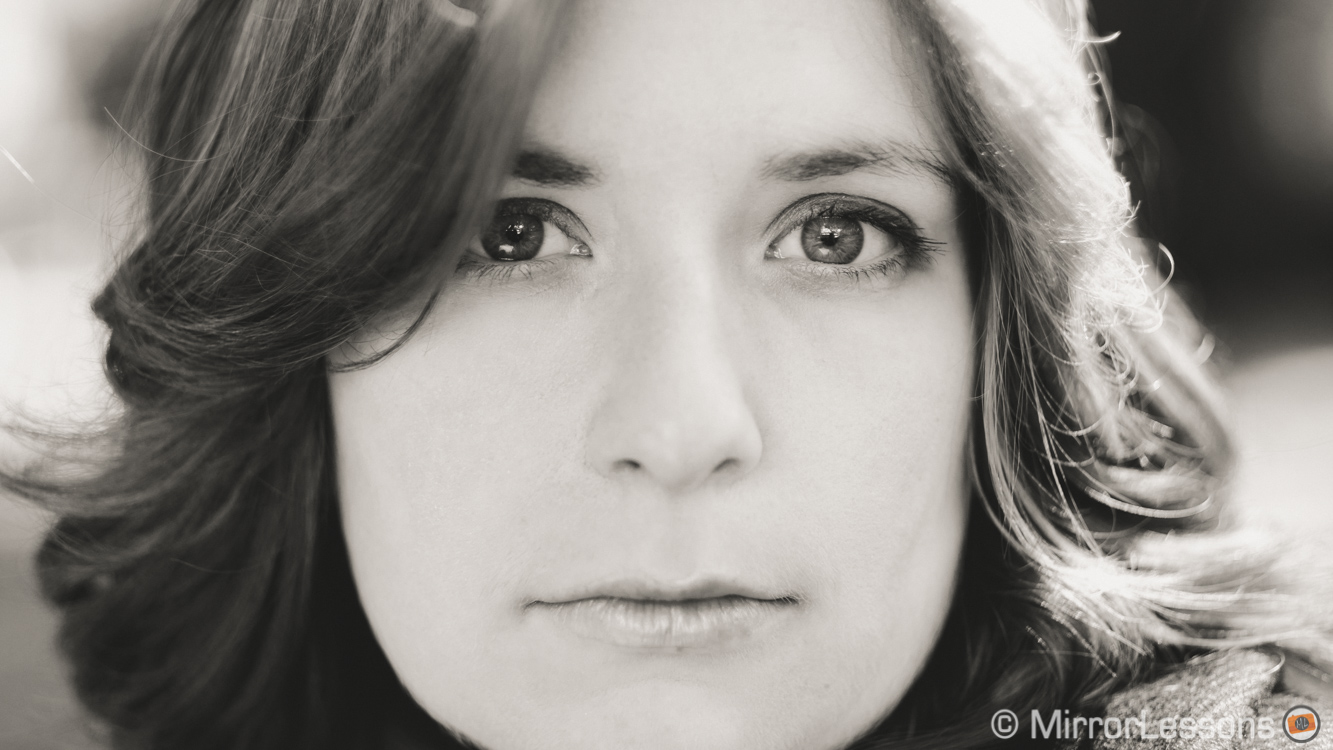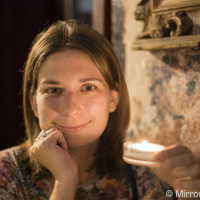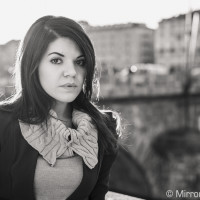Along with street and landscape, portrait photography is probably the genre most photographers would nominate as their favourite. Why is this? The answer is simple: people can’t help but be fascinated by other people. Sure, it is true that I’ve met a handful of photographers who live by the mantra if it’s living, I won’t shoot it, but generally speaking photographers prefer to include some element of life in their work.
It should be noted that for the portrait photography genre, it is actually the lens you choose rather than the camera itself that makes the difference to the quality of your portrait. Fast glass with an attractive bokeh and the capacity to separate the subject from the background can draw the line between an average portrait and a mind-blowing one. It is for this reason that you’ll also find a list of portrait lens suggestions to go with each camera.
In addition to a great lens, a high-performance sensor with pleasant skin and colour rendering will also help. In the mirrorless segment, I haven’t yet found a camera that gives the ultimate skin tone rendition. Some cameras might tend toward yellow or magenta but they can all be easily fixed in post production using the RAW files.
Finally, the cameras chosen for this article are comfortable to use but small enough to enhance discretion and the relationship with the subject. After all this is one of the main advantages of a mirrorless camera.
The selection is based on our experience not only with the cameras but also with the respective systems they fit into.
Sony A7 and Sony A7s
- full frame sensor
- 24 and 12 megapixels
- very flexible raw files with lots of dynamic range
A beautiful shallow depth of field can matter to many portrait photographers and if this is the aspect you desire most of all, then a full frame camera is certainly your best option. The Sony FE system currently has three cameras that can all work well for portraits. I personally excluded the A7r because very high resolution is not a quality I often look for when shooting portraits. Except for some specific studio work or shots such as a portrait of an elderly man that emphasises the texture of his skin, a portrait to me is more about the mood, the light and the model rather than gathering as much detail as possible on the skin. So that leaves us with the A7 and A7s. The latter in my opinion is the best choice if you like to work with natural light. Not only does the sensor have lots of dynamic range and a beautiful colour reproduction, but its ISO sensitivity can also be of great help when you need an extra stop of light.
If 12 megapixels aren’t enough, the Sony A7 is the best of both worlds and perhaps the most balanced option as far as portrait photography is concerned. With its full frame 24 MP sensor, it delivers spectacular image quality and good skin tone rendition as long as you work with the RAW files (the JPGs and Sony picture profiles tend to lean toward a yellowish tint).
If you bring the A7 or A7s on an outdoor portrait shoot, you will find that it is light and easy to carry around compared to its DSLR equivalents. If you are using autofocus, the A7 has an intelligent Face Detection function that locks onto the eyes of your subject so you don’t have to constantly shift the focus point around using the D-pad. For third-party lenses and manual focussing, on the other hand, you have the benefit of a focus magnifying function and peaking levels/colour to fine-tune the focus.
On the lens front, the FE system is new so there aren’t any exciting native portrait lenses yet. Some of the photos above were shot with the Sony/Zeiss FE 55mm f/1.8 lens. For a proper 85mm or 105mm, we will have to wait a little longer. There is the Sony 70-200mm f/4 which gives nice results and with the right adapter, you can use other full frame lenses. Some of the shots above were taken with a Leica Summicron 90mm f/2 but the options are many, from Canon to Nikon to Sigma lenses for instance. If you already own some Sony Alpha mount lens, they will work with the dedicated Sony adapter. In the end, it all comes down to your budget and personal preference!
Our Reviews of the Sony A7 and A7s:
- The Review Preview: Likes and Dislikes about the Sony A7
- Enjoy the light, love the dark – The Sony A7s Full Review
Fujifilm X-T1
- X-Trans II APS-C sensor
- 16 megapixel
- film simulation mode
The Fujifilm X-T1 is another mirrorless camera many portrait photographers have turned to for their work. It has an excellent 16MP X-Trans II APS-C sensor that beautifully renders colour and detail.
Something we love about the Fuji X series for all genres of photography are the film simulation modes. Astia and ProNeg Hi produce natural-looking skin tones for colour portraits, whereas the ‘B g’ (monochrome + green filter) mode is ideal for black and white portraiture.
For those who do a lot of manual focussing, the X-T1’s high resolution EVF will prove a blessing. It features a “dual” mode where you see a split screen with a regular view of the scene and a magnified version. This allows you to see the overall scene and tweak the focus at the same time.
As for lenses, you won’t have to look much further than the brilliant Fujinon XF 56mm f/1.2 which now has a “twin” with an adopting filter that enhances the out-of-focus rendering.
Our Reviews of the Fujifilm X-T1:
- Sometimes, it’s just about love – A Fujinon XF 56mm f/1.2 Review
- Three days walking through the Cinque Terre with the Fuji X-T1 & XF 10-24mm f/4
Olympus OM-D E-M10
- Beautiful colour rendering
- 16 megapixel
- Super compact system with prime lenses
I have used the Olympus OM-D E-M1 for many assignments and for my personal work so it seems like the obvious choice for professional portraits.
However my vote goes to the E-M10 because of its compact size. It is true that the E-M1 has a better grip which, besides making the camera a bit bigger, also gives you a better handling but if you use the optional grip designed especially for E-M10, it handles just as well and doesn’t reduce the compactness. I remember shooting some portrait sessions with the E-M5 last year and I really appreciated its discreet appearance. You get the same feeling with the E-M10 with the bonus of the same sensor as the Olympus OM-D E-M1. In other words, you get the same quality as the Olympus flagship camera. The colour rendering is beautiful and the range of excellent portrait lenses for the system, most of which are also very light and compact, make the system a joy to use for portraits.
Two lenses we love, and that are native to the system, are the M.Zuiko 45mm f/1.8 and 75mm f/1.8. The former is one of the tiniest lenses for the system, where as the latter is a very reasonable size given its focal length. Two other great portrait lenses are the Nocticron Lumix-Leica 42.5mm f/1.2 and the Voigtlander 42.5mm f/0.95.
As with the X-T1, the E-M10 has many advanced features that will make portrait shooting easier. It has a tilt/touch screen for awkward angles, wireless flash capabilities for studio shooting, and live view to control exposure through the EVF. The face detection feature means that you can avoid fiddling around with the AF points, though if you do want to do some “fiddling,” there are a whopping 81 of them to choose from. Like many other MFT cameras, skin tones tend toward a slight magenta tint but it is easily fixable in post.
Some may be concerned about being able to achieve a sufficient shallow depth of field with a Micro Four Thirds camera. Well, as you can see from the photos below, this simply isn’t an issue!
Our Reviews of the Olympus OM-D E-M10:
Panasonic GX7
- Nice image quality
- 16 megapixel
- Compact camera with a great grip
Keeping in mind the criteria that prompted me to choose the E-M10 over the E-M1, another valid option is the Panasonic GX7. I actually prefer its grip– it was just perfect despite its diminutive size, so you don’t really need any extra accessories in my opinion. Another great feature of the camera is not only the tilting screen but also the tilting EVF which can prove very useful when shooting at lower angles.
The Panasonic sensor is also one of the best on the MFT market. Only the one inside the GH4 is more recent. Both cameras deliver almost identical results and again while you could end up choosing the GH4 for its great features, the GX7 is just as good for many things. For instance, it offers great manual focus assist options and a very convenient touch screen that lets you change the focus point even when you are using the EVF.
I am sure we could add many other cameras to the list. Why not a Sony a6000 with the 55mm f/1.8, as it would become an interesting portrait lens on the APS-C sensor. Or a Samsung NX camera with its 85mm 1.4. There is the Leica M system with its wonderful manual focus lenses. And one of my favourite cameras for ambient portraits is also the Fujifilm X100s even though its focal length isn’t necessarily the typical focal length for portraits. The truth is that everyone has their own ideas about which camera is best, and there is no one “correct” definitive answer.
This is why, to end off the article, we also wanted to include someone else’s opinion, as a way of highlighting that in the end it always comes down to personal preferences and needs. Photographer Ben Cherry was very kind to write a personal explanation about why he loves shooting with the Fuji X-Pro1 for portraits.
Fujifilm X-Pro1
Written by Ben Cherry (Facebook/Twitter)
- X-Trans sensor with flexible raw files
- 16 megapixel
- Subject can see your face because OVF is on the left side of the camera
When I use SLRs or mirrorless cameras with a centred viewfinder I generally use my left eye. However, when using the X-Pro1 and X100s I knew that I’d be missing out if I did this, so instead I use my right eye with rangefinder style cameras. I initially felt a bit like a fish out of water but I was surprised how quickly I adjusted to using my other eye.
The advantage of doing this is because on these particular cameras the viewfinder is positioned on the top left-hand corner of the camera, opening up communication between the photographer and subject. As the camera body no longer covers the majority of your face, I find that it enables greater intimacy between yourself and the subject, and as a result better portraits. Instead of your subject just looking down a lens or at a camera body, they can see your face. This is really helpful when you need to give some reassurance or want to convey your emotions.
Fujifilm X-Series cameras produce high quality files, with brilliant JPEG presets that make it very rewarding to use and can speed up your workflow as a result. Furthermore, when combined with wonderful Fujifilm lenses such as the 56mm f1.2, 35mm f1.4 and 23mm f1.4, the results are fantastic. I would highly recommend the Fujifilm X-Pro1 for any portrait photographer looking for a compact system.
Which is your favourite mirrorless camera and portrait lens combo? Tell us about it below!


















